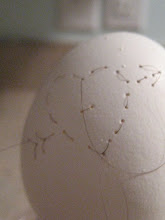
MATERIALS + FINISH
painted steel, glass, corrugated plastic, ribbon steel benches, concrete, vinyl logo
This bus stop is very cold, slick, shiny, and hard.
The materials are very industrial character with joints and construction visible.

NATURAL LIGHT + ARTIFICIAL LIGHT
From the exterior, the bus stop appears dark due to the glass tinting. From the interior, it is brighter than I expected with sunlight easily entering without glare. There is no artificial lighting present in the interior but there is a streetlight just to the left that provides lighting at night. The heavy use of glass and non-opaque materials provides an open and connected feel from the interior. From the exterior, the dark tint makes it difficult to see inside as it gets darker in the evenings. I am more reticent to approach a bus stop at night when I cannot see inside clearly. It makes me feel a little unsafe.

HIERARCHY + SYSTEM
The experience of the this bus stop is divided into zones that are physically marked and based on movement and quantity of people.
The street is the most public.
Cars move at the fastest pace carrying the greatest quantity of people. It is marked by asphalt and standard traffic markings.
The area where the bus pulls into when picking up passengers is next. It is also in asphalt but is attached to the side of the road and is specially marked in yellow paint and signage. It is still part of the road but it is designated for this use only. There are fewer people here and the motion is stop and go.
The sidewalk is where the most pedestrian traffic is found. This traffic is slower and the volume is less than the road. It is marked by the material. The concrete strip along the road creates the physical zone.
The bus stop is the next. It accommodates the least people moving at a time. The people using the stop are generally resting more than moving during their stay.
The final zone is the grassy lawn that is roped off. It is intended for no movement of people.





No comments:
Post a Comment